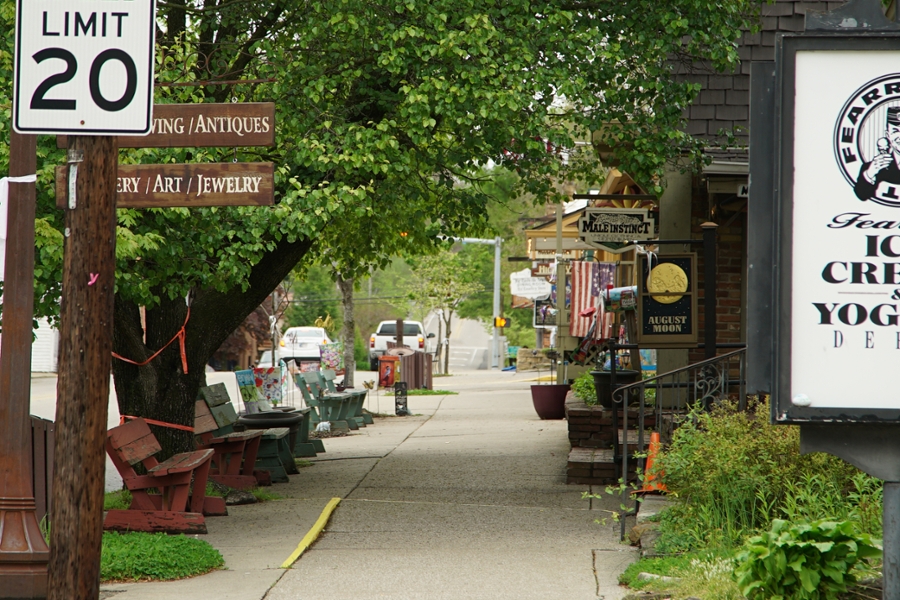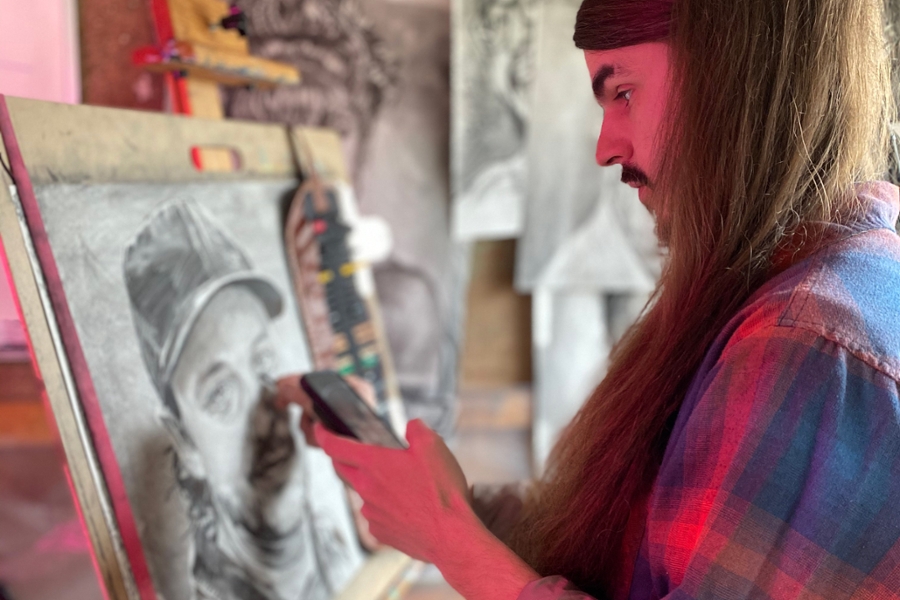As he walks through a north Bloomington graveyard, Casey Winningham points out a number of damaged headstones and what happened to them. They’re not hard to find.
One tall, slim headstone has been warped into a curve by way of a chemical reaction in the stone. Another is lying on the ground in three pieces, with long scratches along the base as evidence that the groundskeeper was a little too careless with the lawnmower.
When something like that happens, Casey says, the groundskeeper will simply prop up the broken stone against the cemetery wall and hope no one notices.
But to a stone carver who has been restoring headstones like these for years, they’re impossible to miss.
On this outing, Winningham is repairing an infant’s headstone that had fallen over; he says it would have taken more than a few years for the grass to overtake it. But before that happens, he’ll dig up the stone’s base, give it and the stone a cleaning and use some modern materials to give it a bit more longevity.
“I tell people, if you’re using anything in the cemetery that you can buy at a hardware store, it’s the wrong stuff,” he said.
While this repair was relatively simple, more complicated tasks require Winningham to go back to his roots as a stone carver. He’s one of only a handful of carvers around the country who still employ the mallet-and-chisel method of carving stone letters. While difficult, the techniques let him create more experimental designs than the sandblasting that’s ubiquitous in headstone work today.
The bulk of Winningham’s carving happens at his home studio. Although some stones will just need some touching up, others will be too far gone.
“If I [know a] family that knew who was buried there and the dates, then I would recreate a new stone for them in the same style as the remnants that I found,” Winningham said. He would then replace the old stone with the new one, but he’d keep the old one nearby. “That’s the stone that people have been coming to for 150 years to mourn.”
Winningham traces the drive for the work back to wandering family cemeteries with his grandfather.
“He was saying, ‘My grandfather’s buried here.’ And I thought even then, at 10 years old, ‘Well Grandpa, when you’re gone, who’s going to know who’s under that rock?’” Winningham said.
Ultimately, Winningham says his work comes down to honoring and preserving history.
“I think it’s a respectable thing to do for those who have gone before us,” Winningham said. “If we can continue to do everything we can to preserve these for the descendants, I just think that’s important.”




